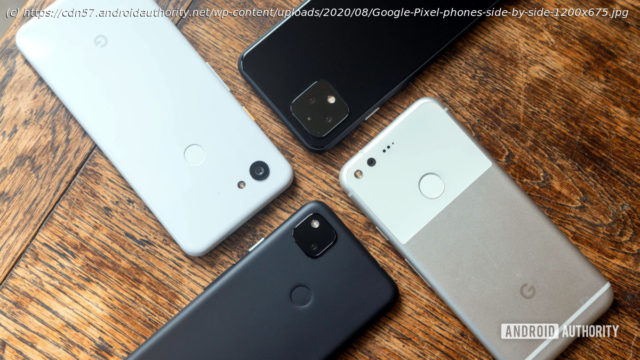With premium and affordable options, Google’s Pixel now has something for everyone. Here’s how Google Pixel prices have changed over the past four years.
Google’s first smartphone line — the Nexus series — definitely wasn’t synonymous with ultra-premium design and features. Google has attempted to change that perception with its current phone family, the Google Pixel series. But that Nexus-to-Pixel name and strategy shift also resulted in another key change — higher prices. While flawless hardware still isn’t Google’s strong suit, the company’s software innovation has taken the Pixel series from zero to tech-enthusiast hero in just four short years. In 2020, the Pixel price range now spans $349 to $999, which is quite a departure from the early years. More recently, Google’s mid-range “Pixel a” series has put Google hardware on the radar for mass consumers too. To see how the company’s roadmap has changed since 2016, we’ve compiled price tags and some key product talking points for every Pixel handset so far. Read more: All Google Pixel phones released so far At $649, the original Pixel seems quite cheap compared to today’s flagships, but this wasn’t a particularly affordable debut. Samsung launched its Galaxy S7 flagship for $689. Meanwhile, the swanky S7 Edge variant retailed for $769, just a fraction more expensive than the Pixel XL’s $769 debut. The 128GB Pixel XL cost an eyewatering $869, while the ill-fated (see combustible), but far more sophisticated, Galaxy Note 7 cost $850. The Pixel series clearly intended to play with the big kids from day one. See also: Google Pixel redux review: Proof of the power of software Google didn’t shy from charging premium prices, even though, frankly, the first-generation Pixel’s hardware was hot garbage. The metal and glossy finish chipped too easily, the phone lacked the increasingly standard IP68 water and dust resistance rating, and the rear camera didn’t even feature OIS. There really wasn’t a lot of hardware on offer for such a high price tag. Instead, Google Assistant, the Pixel Launcher, and Google’s impressive HDR+ photography software won Google some early fans. To this day, software remains one of the most compelling reasons to purchase a Pixel handset. Google sought to keep the entry point to the Pixel series reasonably affordable with the arrival of the Pixel 2, sticking to its $649 base entry point for 64GB storage and $749 for the 128GB version. However, Google saw room for a price hike with the Pixel 2 XL. Its base cost leapt to $849 and $949 for the 128GB variant, a full $80 more than its first-generation equivalent. See also: Google Pixel 4a vs older Google phones: Should you upgrade? $80 is hardly the largest price hike in history, but that put the Pixel 2 XL directly up against the $850 Samsung Galaxy S8 Plus. Perhaps not the best move for a phone that would prove to have some battery life and display issues, while also daring to ditch the headphone jack ahead of the curve. Google made strides with in-house hardware though, introducing the Pixel Visual Core to enhance the phone’s AI and image processing capabilities, giving rise to one of the best cameras phones on the market. Even with the considerably high cost in mind, Google did enough to refine its original vision and just about justify the higher price. As we said at the time, you don’t buy a Pixel just for the hardware.






